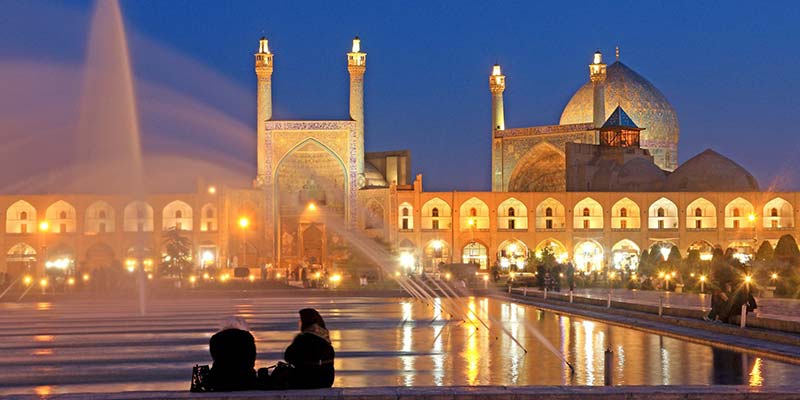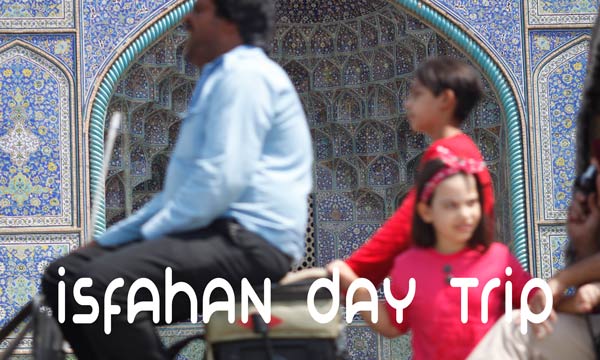🕌 Isfahan Travel and City Guide: The Crown Jewel of Persian Civilization
“Isfahan nesf-e jahan ast” — Isfahan is half the world
Step into Isfahan, a city where every square, street, and bridge whispers the legacy of a glorious empire. Once the beating heart of Safavid Persia, today Isfahan stands as a living museum of Persian-Islamic art, architecture, and poetry. Whether you’re chasing silk road stories, admiring tile-covered mosques, or savoring gaz (Persian nougat) under a leafy boulevard, Isfahan promises magic at every turn.
📍 Where Is Isfahan?
-
Region: Central Iran, ~450 km south of Tehran
-
Population: ~2 million
-
Climate: Four-season city with hot summers and crisp winters
-
Best Time to Visit: March–May and September–November
🌟 Why Visit Isfahan?
-
🕌 Home to UNESCO-listed Naqsh-e Jahan Square, one of the world’s largest city squares
-
🌉 Walk across the city’s iconic 17th-century bridges
-
🎨 Explore Persian miniature art, calligraphy, and hand-painted tiles
-
🛍️ Shop for handcrafted carpets, enamelware, and miniature paintings
-
🍴 Taste authentic Isfahani cuisine and sweets
Isfahan isn’t just a city—it’s a canvas of Persian grandeur, one of the most visually stunning cities in Iran and an essential stop for travelers seeking architectural marvels and cultural depth.
🏛️ Must-See Attractions in Isfahan
🏞️ Naqsh-e Jahan Square (Imam Square)
-
One of the largest city squares in the world and a UNESCO World Heritage Site
-
Surrounded by architectural masterpieces:
-
Shah Mosque (Imam Mosque) – with a breathtaking blue-tiled dome
-
Sheikh Lotfollah Mosque – a jewel box of light and tile
-
Ali Qapu Palace – Safavid music hall and panoramic terrace
-
Qeysarie Gate – entrance to the historic Grand Bazaar
-
🌉 Si-o-se-pol (Bridge of 33 Arches)
-
A masterpiece of Safavid engineering
-
Best viewed at sunset with reflections in the Zayanderud River
-
Popular with locals for evening strolls and tea breaks
🌉 Khaju Bridge
-
Decorated with tiled pavilions and used as both bridge and dam
-
Often hosts impromptu singing performances under its arches
🕌 Jameh Mosque of Isfahan
-
Over 1,200 years old, this mosque tells the story of Islamic architecture through the ages
-
Stunning brickwork, iwans, and domes that reflect Seljuk, Safavid, and Mongol styles
🕍 Vank Cathedral (Holy Savior)
-
Located in New Julfa, the Armenian quarter
-
A fascinating fusion of Persian-Islamic and Christian-European art
-
Intricate frescoes, golden altars, and a museum of Armenian heritage
🎨 Isfahan’s Art & Craft Heritage
Isfahan has long been Iran’s cultural and artisanal capital. The city’s bazaars are treasure troves for collectors, designers, and curious travelers alike.
🧿 What to Buy:
-
Mina Kari (blue enamel on copper)
-
Khatam Kari (Persian marquetry)
-
Ghalam Zani (metal engraving)
-
Miniature paintings, calligraphy, and hand-painted boxes
-
Silk carpets and kilims
🛍️ Where to Shop:
-
Grand Bazaar of Isfahan – centuries-old marketplace connecting Imam Square to the old city
-
Qeysarieh Bazaar – a labyrinth of artisans, galleries, and spice shops
-
Julfa Boutiques – ideal for jewelry, textiles, and contemporary crafts
🍛 What to Eat in Isfahan
Must-Try Dishes:
-
Beryani – signature dish of grilled lamb mince served on flatbread (not to be confused with biryani!)
-
Khoresht-e Mast – a sweet saffron yogurt stew made with lamb
-
Fesenjan – pomegranate-walnut stew with chicken or duck
-
Ash Reshteh – hearty noodle and bean soup with kashk (fermented whey)
Sweets & Drinks:
-
Gaz – Persian nougat with pistachio, rosewater, and cardamom
-
Poolaki – thin saffron candy
-
Doogh-o-Gooshfil – a local combo of salty yogurt drink with sweet fried pastries
Recommended Restaurants:
-
Shahrzad Restaurant – Classic Persian cuisine in an elegant setting
-
Azadegan Teahouse (Chah Haj Mirza) – Quirky, historic, and filled with antiques
-
Toranj Restaurant – Persian fine dining with a garden ambiance
-
Hermes Café (Julfa) – Modern café culture meets Armenian charm
🏨 Where to Stay in Isfahan
🏆 Top Hotels:
-
Abbasi Hotel – Once a caravanserai, now a luxury hotel with traditional architecture
-
Kowsar Hotel – Riverside property with great amenities
-
Atigh Traditional Hotel – A boutique stay with authentic Persian décor
💼 Mid-Range & Budget:
-
Venus Hotel – Comfortable rooms near tourist zones
-
Hasht Behesht Apartment Hotel – Good for families and long stays
-
Mahbibi Hostel – Chic, clean, and backpacker-friendly
🚶 Suggested Tours & Day Trips
-
🏛️ Isfahan Highlights City Tour
-
Includes Naqsh-e Jahan, bazaar, mosques, bridges
-
-
🎨 Isfahan Art & Handicrafts Workshop Tour
-
Hands-on experience with Persian arts: enamel, miniature painting, or calligraphy
-
-
🕍 Julfa Cultural Tour
-
Discover Armenian heritage and sample traditional coffee and sweets
-
-
🏞️ Isfahan to Varzaneh Desert Excursion
-
Sand dunes, salt lake, camel rides, and local hospitality
-
-
🌄 Soffeh Mountain Evening Hike
-
Gentle hike with city views, perfect for sunset picnics
-
✈️ Getting to Isfahan
By Air:
-
Isfahan International Airport (IFN) connects to Tehran, Mashhad, Kish, and select international destinations.
By Train:
-
Direct trains from Tehran, Yazd, Shiraz, and Mashhad
By Bus:
-
VIP buses daily from major cities like Tehran, Shiraz, and Hamadan
By Car:
-
~6 hours from Tehran via Kashan
-
~5 hours from Yazd
🌿 Sustainable & Responsible Travel in Isfahan
-
Support local artisans and ethical souvenir shops
-
Avoid photographing people without permission, especially in religious sites
-
Carry reusable bottles and bags to reduce waste
-
Choose eco-friendly tours and guides that emphasize cultural preservation
🧳 Travel Tips for First-Time Visitors
-
Most shops close during midday siesta (around 1–4 PM)
-
Fridays are a weekend day—some attractions may have limited hours
-
Dress modestly and respectfully, especially in mosques
-
Don’t miss evening strolls over the bridges—it’s a city-wide ritual
📩 Book Your Isfahan Experience
Want to explore Isfahan like a local—with insider access, heritage experiences, and hidden corners most tourists miss?
Let our team of Persian culture specialists design a custom journey for you.
-
🌐 Website: www.wegoiran.com
-
📧 Email: [email protected]
-
📞 Phone: +98 917 314 5627
-
🎒 Tour Types: Architecture, Culinary, Photography, Art & Culture
🔗 Related Travel Pages
-
🏛️ Iran’s Most Beautiful Mosques: A Photo Journey
-
🎨 Persian Arts & Handicrafts: What to Buy in Iran
-
🧕 Iran Dress Code & Cultural Etiquette for Travelers
-
🐪 Day Trip: Varzaneh Desert from Isfahan
-
🛤️ From Shiraz to Isfahan: Road Trip Planner



